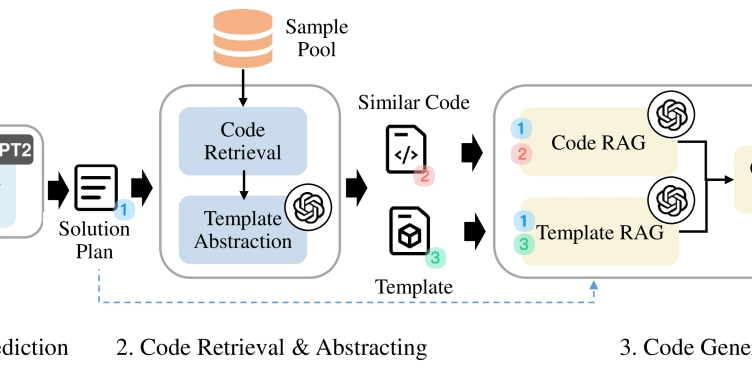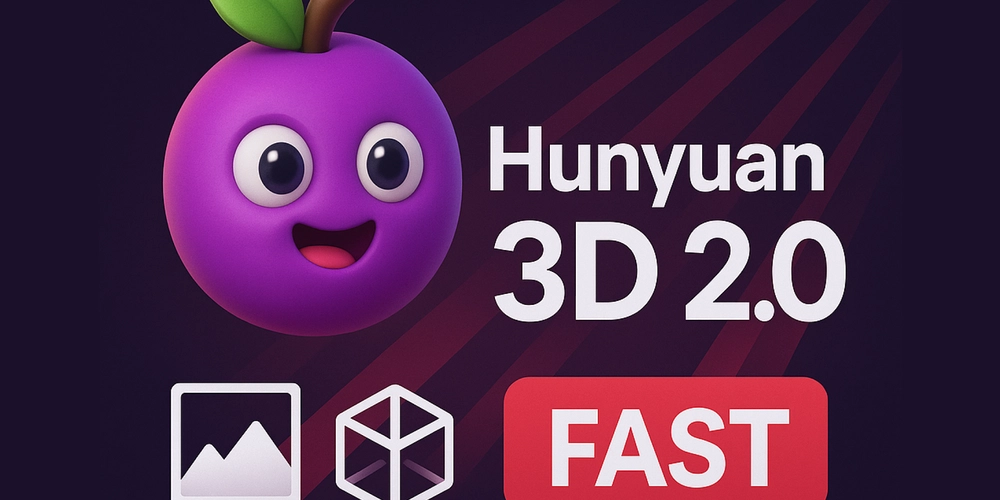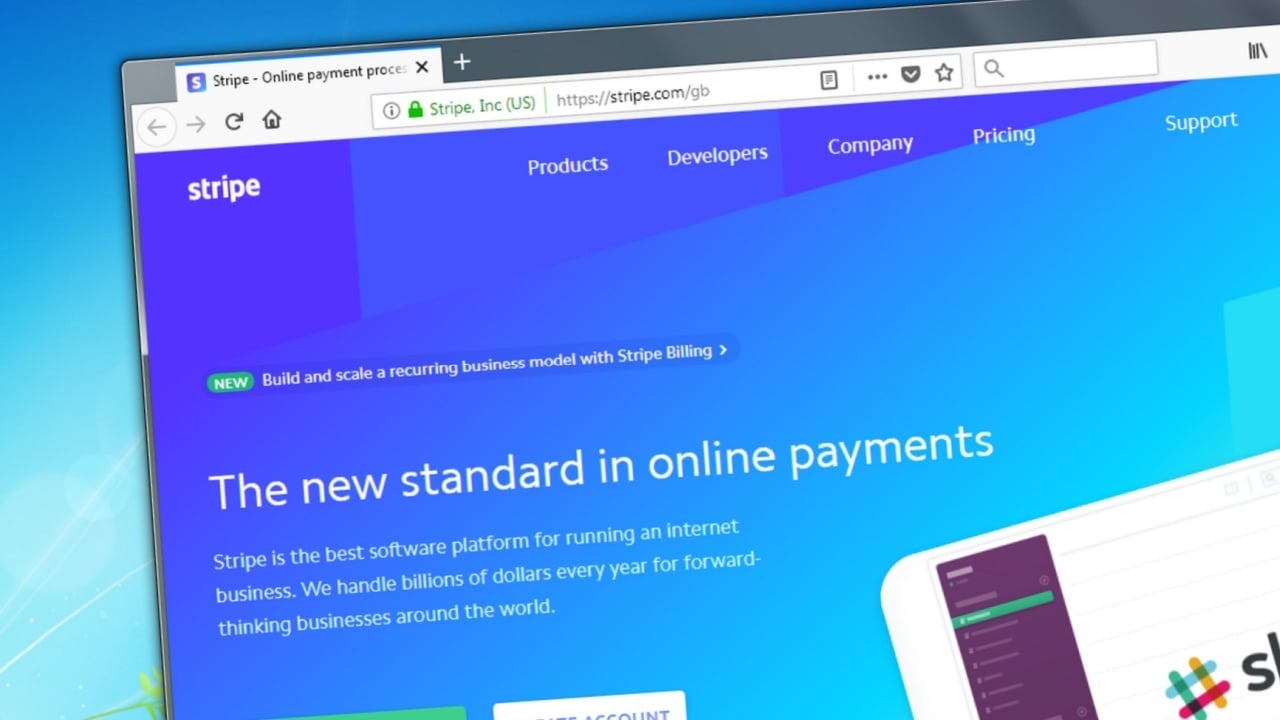Arbitrum: Pioneering Open Source in Blockchain – A Deep Dive into Innovation and Community Impact
Abstract: Arbitrum is transforming the blockchain landscape by marrying Ethereum scalability with robust open source principles. This post delves deep into Arbitrum’s background, core concepts, innovative features, practical applications, challenges, and future trends. We examine how its community-driven development, transparent contribution frameworks, and cross-project collaborations foster innovation while ensuring security and sustainable funding. Designed for developers, technology enthusiasts, and blockchain stakeholders, this comprehensive guide unpacks Arbitrum’s role in redefining blockchain scalability and open source methodology. Introduction In a rapidly evolving digital world, open source has emerged as a central driving force behind technological progress. By embracing transparency and community collaboration, blockchain projects are increasingly shifting away from traditional closed-source models. Among such groundbreaking projects, Arbitrum stands out with its unique approach to enhancing Ethereum’s scalability. Leveraging open source contributions, Arbitrum ensures high network efficiency, security through peer audits, and vast community engagement. In this post, we will explore the innovative mechanisms behind Arbitrum, understand its open source strategies, and discuss its profound impact on the blockchain ecosystem. Background and Context Open source software represents a paradigm shift where the source code is made accessible to anyone. By enabling collaborative development, projects can innovate faster and sustainably. In the blockchain domain, where transparency and security are paramount, this approach has proven invaluable. A Brief History Arbitrum emerged as a result of challenges encountered within the Ethereum network— Scalability Issues: Ethereum’s congestion and high transaction fees created a bottleneck. Need for Transparency: The complexity of blockchain demanded peer-reviewed, secure code to build trust and reliability. Community Collaboration: Open source platforms such as GitHub allowed developers to contribute, test, and refine the code. Arbitrum’s goal became clear: enhance Ethereum through off-chain transaction processing, thereby reducing costs while increasing speed. Its success is deeply entwined with open source development ideals, including open source development funding and sustainable funding for open source. Ecosystem and Community Context Arbitrum’s open source strategy involves a detailed contribution framework available on GitHub (Arbitrum GitHub Repository), and a vibrant developer community active on platforms like Discord and community forums. The project is backed by robust community-driven projects and initiatives that ensure developers receive adequate developer community support. Core Concepts and Features At the heart of Arbitrum lie several innovative features that drive its success in merging blockchain scalability with open source principles. Key Technical Concepts Optimistic Rollups: Arbitrum uses optimistic rollups to process transactions off the main Ethereum chain. This meta-layer solution reduces transaction fees, boosts speed, and minimizes blockchain congestion. The idea behind rollups is to batch multiple transactions into a single proof that is then verified on Ethereum. This concept is one of many examples of how innovations at Arbitrum align with principles of ethical software development. Smart Contract Accessibility: By optimizing the execution environment, Arbitrum lowers the costs and risks associated with deploying smart contracts. This, in turn, allows developers to create more innovative decentralized applications (dApps). The open source framework encourages widespread open source project sponsorship opportunities. Contribution and Collaboration Framework Arbitrum’s success is largely attributed to its open contribution model. Key elements include: Comprehensive Documentation: Accessible guides and code comments lower the barrier to entry for developers. Community Forums and Hackathons: These forums promote dynamic idea exchange and constant improvement, ensuring the ecosystem remains vibrant and innovative. Security and Peer Audits: Open peer reviews and external audits build trust and ensure the system remains secure. Below is a table summarizing Arbitrum’s core features alongside their benefits: Feature Description Benefits Optimistic Rollups Batches off-chain transactions and verifies them on Ethereum Faster transactions, lower fees Smart Contract Optimization Reduces deployment costs and risk for dApps Increased innovation and scalability Open Contribution Model Accessible documentation and active community forums Transparent collaboration Peer Audits and Security Open for external reviews and expert audits Improved trust and security Additional Insights from the Ecosystem Arbitru

Abstract:
Arbitrum is transforming the blockchain landscape by marrying Ethereum scalability with robust open source principles. This post delves deep into Arbitrum’s background, core concepts, innovative features, practical applications, challenges, and future trends. We examine how its community-driven development, transparent contribution frameworks, and cross-project collaborations foster innovation while ensuring security and sustainable funding. Designed for developers, technology enthusiasts, and blockchain stakeholders, this comprehensive guide unpacks Arbitrum’s role in redefining blockchain scalability and open source methodology.
Introduction
In a rapidly evolving digital world, open source has emerged as a central driving force behind technological progress. By embracing transparency and community collaboration, blockchain projects are increasingly shifting away from traditional closed-source models. Among such groundbreaking projects, Arbitrum stands out with its unique approach to enhancing Ethereum’s scalability. Leveraging open source contributions, Arbitrum ensures high network efficiency, security through peer audits, and vast community engagement. In this post, we will explore the innovative mechanisms behind Arbitrum, understand its open source strategies, and discuss its profound impact on the blockchain ecosystem.
Background and Context
Open source software represents a paradigm shift where the source code is made accessible to anyone. By enabling collaborative development, projects can innovate faster and sustainably. In the blockchain domain, where transparency and security are paramount, this approach has proven invaluable.
A Brief History
Arbitrum emerged as a result of challenges encountered within the Ethereum network—
- Scalability Issues: Ethereum’s congestion and high transaction fees created a bottleneck.
- Need for Transparency: The complexity of blockchain demanded peer-reviewed, secure code to build trust and reliability.
- Community Collaboration: Open source platforms such as GitHub allowed developers to contribute, test, and refine the code.
Arbitrum’s goal became clear: enhance Ethereum through off-chain transaction processing, thereby reducing costs while increasing speed. Its success is deeply entwined with open source development ideals, including open source development funding and sustainable funding for open source.
Ecosystem and Community Context
Arbitrum’s open source strategy involves a detailed contribution framework available on GitHub (Arbitrum GitHub Repository), and a vibrant developer community active on platforms like Discord and community forums. The project is backed by robust community-driven projects and initiatives that ensure developers receive adequate developer community support.
Core Concepts and Features
At the heart of Arbitrum lie several innovative features that drive its success in merging blockchain scalability with open source principles.
Key Technical Concepts
Optimistic Rollups:
Arbitrum uses optimistic rollups to process transactions off the main Ethereum chain. This meta-layer solution reduces transaction fees, boosts speed, and minimizes blockchain congestion. The idea behind rollups is to batch multiple transactions into a single proof that is then verified on Ethereum. This concept is one of many examples of how innovations at Arbitrum align with principles of ethical software development.Smart Contract Accessibility:
By optimizing the execution environment, Arbitrum lowers the costs and risks associated with deploying smart contracts. This, in turn, allows developers to create more innovative decentralized applications (dApps). The open source framework encourages widespread open source project sponsorship opportunities.
Contribution and Collaboration Framework
Arbitrum’s success is largely attributed to its open contribution model. Key elements include:
- Comprehensive Documentation: Accessible guides and code comments lower the barrier to entry for developers.
- Community Forums and Hackathons: These forums promote dynamic idea exchange and constant improvement, ensuring the ecosystem remains vibrant and innovative.
- Security and Peer Audits: Open peer reviews and external audits build trust and ensure the system remains secure.
Below is a table summarizing Arbitrum’s core features alongside their benefits:
| Feature | Description | Benefits |
|---|---|---|
| Optimistic Rollups | Batches off-chain transactions and verifies them on Ethereum | Faster transactions, lower fees |
| Smart Contract Optimization | Reduces deployment costs and risk for dApps | Increased innovation and scalability |
| Open Contribution Model | Accessible documentation and active community forums | Transparent collaboration |
| Peer Audits and Security | Open for external reviews and expert audits | Improved trust and security |
Additional Insights from the Ecosystem
Arbitrum’s influence extends beyond basic technical capabilities. Its strategies for open source collaboration are also paving the way for innovative funding methods such as innovative funding for open source projects. These funding models focus on sustaining development and promoting continuous community engagement.
Applications and Use Cases
Arbitrum’s robust design leads to multiple practical applications within the blockchain ecosystem. Here are a few notable examples:
Decentralized Finance (DeFi) Apps:
Many DeFi platforms have integrated Arbitrum to manage high transaction volumes seamlessly. Through its scalability solutions, Arbitrum ensures that protocols can function without the delays and high fees lagging traditional Ethereum-based applications.NFT Marketplaces:
Non-Fungible Tokens (NFTs) benefit from the faster transaction speeds enabled by optimistic rollups. This results in smoother user experiences, beneficial pricing, and overall improved efficiency in digital asset exchanges.Interoperable dApps:
Cross-project collaborations, supported by Arbitrum’s open ecosystem, promote interoperability among various blockchain protocols. This is evident from its integration with multiple protocols that enhance Ethereum’s network capabilities, thus creating a more connected ecosystem.
A bullet list outlining key benefits of using Arbitrum in practical applications:
- Reduced Transaction Fees: Lower cost for users across DeFi and NFT platforms.
- Enhanced Scalability: Efficient handling of higher transaction loads.
- Improved User Experience: Faster transactions with reduced congestion.
- Facilitated Interoperability: Seamless integration with multiple blockchain networks.
For a closer look at how Arbitrum enhances scalability for Ethereum-based applications, check out Arbitrum: A Game Changer for Ethereum’s Scalability.
Challenges and Limitations
While Arbitrum paves the way for many improvements, it also faces several challenges:
Technical Limitations
Scalability Versus Decentralization:
Although off-chain solutions like optimistic rollups improve transaction speed, they occasionally raise concerns about centralization risks. Balancing performance with the intrinsic security benefits of decentralization remains a constant challenge.Security Concerns and Audit Frequency:
Despite its transparency and peer audit system, maintaining continuous security in an ever-evolving threat landscape remains complex. The project must regularly update its security audits and vulnerability assessments.
Adoption Challenges
Community Engagement Over Time:
Sustaining momentum in contributor engagement and managing community expectations are key to long-term success. As discussed in Exploring Open Source Project Sponsorship Opportunities, aligning sponsor incentives with project goals is essential.Funding and Resource Allocation:
Securing constant funding for open source development is challenging. While models like open source funding for educational resources have emerged, there is an ongoing need for innovative funding mechanisms.
External Factors
- Regulatory Pressures: As blockchain technology gains mainstream adoption, regulatory oversight increases. Navigating regulatory compliance while staying true to open source principles is an evolving challenge that all blockchain projects—including Arbitrum—must tackle.
Future Outlook and Innovations
The future of Arbitrum and similar blockchain projects appears promising. However, staying competitive and innovative requires embracing new trends and overcoming existing challenges.
Trends to Watch
Enhanced Interoperability:
Arbitrum is set to expand its collaborations across multiple blockchains, a trend that will likely yield even more integrated networks. As traditional barriers break down, we may see unprecedented cross-chain interactions that benefit the entire ecosystem.Advanced Security Mechanisms:
Investing in next-generation security protocols—possibly incorporating artificial intelligence (AI) for threat detection—will be key. Recent trends in ethical software development indicate a move towards automated and continuous security audits.New Funding Models:
As explored in Arbitrum and Sustainable Development: Bridging Blockchain and Ecology, future strategies may include diversified funding sources such as decentralized grants, corporate sponsorships, and even blockchain-enabled micro-funding via platforms like GitHub Sponsors.
Innovations on the Horizon
Layer 3 Solutions:
Future upgrades may include additional scaling layers built atop Arbitrum’s current infrastructure. These layers could further optimize transaction processing and enable even more sophisticated smart contract interactions.Decentralized Governance Enhancements:
Strengthening community governance through token-based voting systems and transparent decision-making processes can ensure that the ecosystem remains resilient and adaptive. Initiatives such as community engagement strategies will be vital for future development.Integration with Emerging Technologies:
With the rise of AI and IoT, Arbitrum may incorporate these technologies to offer enhanced data verification, improved automation in audits, and real-time monitoring of decentralized applications.
For additional insights on how evolving funding models can impact open source ecosystems, you can also read Sponsor Open Source Projects on GitHub: A Comprehensive Guide for 2023 and Beyond.
Summary
Arbitrum’s journey as a pioneering open source blockchain project highlights the transformative power of community-driven innovation. By leveraging techniques like optimistic rollups and constructing a robust open source contribution model, Arbitrum addresses key challenges facing Ethereum while simultaneously setting new standards for efficiency, security, and scalability.
Key Takeaways:
- Innovative Techniques: Optimistic rollups and advanced smart contract optimizations pave the way for cheaper and faster transactions.
- Open Source Collaboration: An accessible contribution framework, paired with active community support and regular peer audits, fosters continuous innovation.
- Real-World Applications: Arbitrum’s technology drives improvements in DeFi, NFT marketplaces, and interoperable dApps.
- Challenges to Overcome: Balancing decentralization with scalability, ensuring continuous security, and evolving funding models represent ongoing challenges.
- Bright Future: With emerging technologies, enhanced regulatory clarity, and diversified funding strategies, Arbitrum is well-positioned to lead the next generation of blockchain innovation.
For further information on how ethical software development and open source funding are revolutionizing the tech landscape, feel free to explore resources like Open Source Development Funding and Sustainable Funding for Open Source.
To read the original article on Arbitrum’s contributions to open source, visit the Arbitrum Open Source Contributions page.
Final Thoughts
Arbitrum is not just a technological marvel—it is a testament to the power of open source collaboration and community engagement. As blockchain technology continues to evolve, the ideas and innovations born from projects like Arbitrum will define the future of decentralized applications and the broader digital ecosystem. Combining robust scalability solutions with transparent funding and engagement models, Arbitrum is setting an example for blockchain projects across the globe.
For additional perspectives on Arbitrum and its potential impact on blockchain scalability, check out these insightful articles on Dev.to:
- Arbitrum: Pioneering Open Source in Blockchain
- Exploring Open Source Project Sponsorship Opportunities
As we navigate the future of blockchain technology, it is clear that open source methodologies and community-driven projects like Arbitrum will be at the forefront of digital innovation. The fusion of cutting-edge technology with inclusive, transparent development is not only beneficial for current applications but also essential for creating a resilient, collaborative technological future.
Happy coding and innovating – the future of blockchain is open!






























































































































































![[The AI Show Episode 143]: ChatGPT Revenue Surge, New AGI Timelines, Amazon’s AI Agent, Claude for Education, Model Context Protocol & LLMs Pass the Turing Test](https://www.marketingaiinstitute.com/hubfs/ep%20143%20cover.png)



























































































































![[FREE EBOOKS] AI and Business Rule Engines for Excel Power Users, Machine Learning Hero & Four More Best Selling Titles](https://www.javacodegeeks.com/wp-content/uploads/2012/12/jcg-logo.jpg)











































































































































































































































![Hostinger Horizons lets you effortlessly turn ideas into web apps without coding [10% off]](https://i0.wp.com/9to5mac.com/wp-content/uploads/sites/6/2025/04/IMG_1551.png?resize=1200%2C628&quality=82&strip=all&ssl=1)




![This new Google TV streaming dongle looks just like a Chromecast [Gallery]](https://i0.wp.com/9to5google.com/wp-content/uploads/sites/4/2025/04/thomson-cast-150-google-tv-1.jpg?resize=1200%2C628&quality=82&strip=all&ssl=1)











![iPadOS 19 May Introduce Menu Bar, iOS 19 to Support External Displays [Rumor]](https://www.iclarified.com/images/news/97137/97137/97137-640.jpg)

![Apple Drops New Immersive Adventure Episode for Vision Pro: 'Hill Climb' [Video]](https://www.iclarified.com/images/news/97133/97133/97133-640.jpg)




































































































































